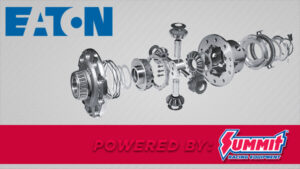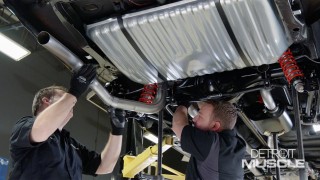Difference Between Limited Slip Differentials
Most vehicles on the road today have some sort of differential fitted in the drive axle. As you go around corners the inside wheel always spins slower than the outside wheel because it has a shorter path to take. If the two wheels were solidly connected, the inside would skid around which leads to accelerated tire wear and unpredictable handling. You don’t want to deal with that every day, so a differential is installed to allow a split in speed between the two wheels. Car guys prefer maximum traction at all times but a lot of stock vehicles come from the factory with an open differential.
On an open differential, four spider gears send power between the two wheels. As you go around corners, the spider gears are constantly turning which allows for a difference of speed. And while that’s great for a commuter car in ideal weather, but not so great in low-traction situations.
That’s where a limited slip differential comes into play. It helps better distribute the power between the two sides. We’re going to cover some of the most popular types.
A clutch-type limited slip is what you’ll find in most American muscle cars from the ’60s and ’70s along with other rear-wheel-drive cars. Depending on the manufacturer, there are a lot of different trade names: Posi trac, sure grip or track loc but they all work the same. Behind each spider gear is a series of clutch packs and there are springs in the center that push out against the clutches. The clutches slip just enough to allow some difference in speed while you’re cornering. But if you ever get stuck with a limited diff, both wheels will be spinning.
If you own a full-size GM truck that’s labeled as having a locking differential, it’ll have an Eaton G80. It’s called a locker but it’s different in terms of a “traditional” locker. It’s actually more similar to a clutch style limited slip. No matter what application you have, there’s a differential out there that’ll work for you.
Want to read more articles like this?
Join the PowerNation Email NewsletterRead More from PowerNation
Video Player is loading.
Current Time 0:00
/
Duration 0:00
Loaded: 0%
0:00
Stream Type LIVE
Remaining Time -0:00
1x
- Chapters
- descriptions off, selected
- captions off, selected
This is a modal window.









